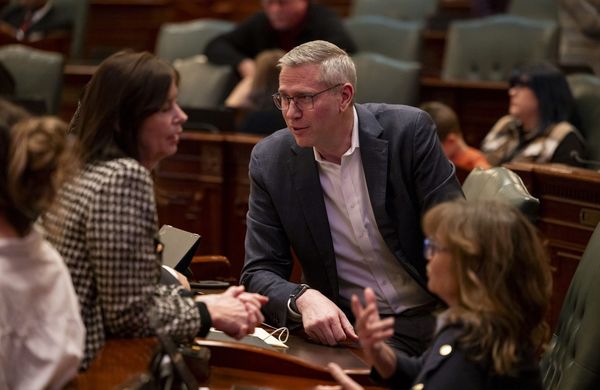
I was 14 years old when I first read The Hot Zone by Richard Preston, a 1994 best seller detailing the horrors of hemorrhagic fever viruses like Ebola. Preston’s descriptions of scientists in hazmat suits and patients vomiting out their dark, bloody insides fascinated me. I decided then that I’d grow up to be a virologist.
Like many of my teenage dreams, that didn’t come true, but I ended up pursuing biochemistry—and I found my way back to viruses when I started my Ph.D., through what was supposed to be a “quick and easy” research project on bacteriophages, viruses that infect bacteria.
Viruses are the most abundant biological entity on Earth, but we struggle to categorize them. Some scientists consider viruses not fully dead, because they can copy themselves, but not fully living, either, because they need a host cell to help them do it. In living organisms, cells divide in multiple rounds, one to two to four to eight. Viruses can make thousands of copies in one round of replication. These peculiar life forms have likely been around as long as, or longer than, life on this planet. And they’re in us: According to some estimates, nearly 10 percent of our own DNA comes from endogenous retroviruses, ancient viruses that infected humans millions of years ago and have been passed down since then.
As I learned in my teen years, viruses can also entirely change how we live. HIV, with nine genes, can kill us, with our roughly 20,000 genes and 40 trillion cells. Although we now have good medications to both treat and prevent HIV, the effects of that pandemic still influence my life as a queer man.
Since the moment when it became obvious that the coronavirus would affect us all, another overlapping pandemic, I’ve been haunted by plague memories—and an unstoppable need to write what would become my new essay collection, Virology. In 2020, viruses seemed too complicated to explain only with science; I needed literature too. I read about cancer (which can be caused by viruses); about the viruses that do us no harm; about the ones that cause, for years or decades, deadly diseases. And I also needed to read about health, not just illness. I turned especially to texts from queer writers about HIV, which informs how I and many others think about the newest pandemic.
Narratives and theory about bodies, health, illness, and memory are necessary to understand how viruses shape our world. This reading list collects some of the books, from genres including queer theory, memoir, poetry, and scholarship, that helped guide me, and my writing, to a fuller understanding of our messy biology.
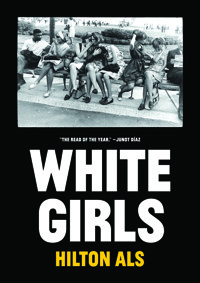
White Girls, by Hilton Als
In the first essay of White Girls, Als shows us what it was like to survive the ’80s and ’90s as a gay man in New York City. But even decades later, the specter of HIV never leaves him. Als mourns the loss of a friendship that dies, in part because he can never express a romantic and sexual desire to his friend. “In all the years I loved him, I did not say I loved him, or, more specifically, how I loved him. If I did, wouldn’t that end up in a garbage bag, too?” he writes, referencing the early AIDS dead whom hospitals put in plastic bags. The prose holds the emotional terror of losing so many friends and would-be lovers—of not being able to take lovers because sex meant death. Als’s work is an essential reminder that not all queer men were lost to the early HIV years; many are still here, writing. But the memories linger, and painfully so. Als’s mournful essay shows how a virus upended an entire social world, and despite our effective treatments for the disease, the emotional scars haven’t healed.
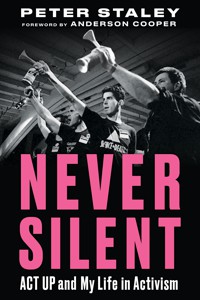
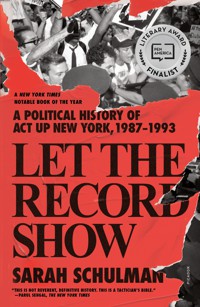
Never Silent, by Peter Staley, and Let the Record Show, by Sarah Schulman
In these two books, two members of ’80s and ’90s ACT UP New York, the grassroots AIDS advocacy group, write completely orthogonal works about the same time and movement. Staley’s is a traditional memoir, deeply seated in the first person, and Schulman’s is a collection of oral histories. Never Silent follows Staley’s years as a member of the ACT UP subgroup that worked on biomedical science. The chapter in which he details his own drug use after effective HIV treatments were available is eerily relevant to our current “post”-COVID moment: The medicine might have saved his life, but the trauma he experienced wasn’t gone, and meth helped him deal with it, or just forget and feel good for a time. Schulman takes a different approach. Let the Record Show is a kaleidoscope, telling stories not of a few cisgender, white, male heroes; she attempts to tell all of the ACT UP stories together, including those of women and people of color, an absolutely necessary act. As is clear from Staley’s book launch at the Strand, where his interview with Schulman turned contentious, the strain of the ’90s lives on. Even though Staley is a friend of mine, given the choice, I tend more toward Schulman’s collectivist perspective. Schulman’s position as writer means it is her perspective, even if she’s not always the one speaking. As The New Yorker noted, Schulman’s ethical opposition to a famous clinical trial is still apparent in her recounting of it, although today, many consider the trial a crucial, if fraught, moment in HIV research. In this case, we’re lucky to have both books; they both have small failures, and they’re best read as a pair.
[Read: Let the Record Show is an essential story of the AIDS movement]

The Cancer Journals, by Audre Lorde
When we are ill, the priorities of our life become apparent in ways that can be masked by everyday routines. One of the most clarifying texts on the topic is by a queer woman who got cancer in the ’70s and wrote a book that would forever change what that disease meant to me. You might think I’m talking about Susan Sontag’s Illness as Metaphor. But Sontag’s work is frequently cited, whereas Lorde’s book The Cancer Journals, written under the same circumstances, is too often ignored. Unlike Sontag’s antiseptic essays, Lorde wrote and later published her journals, which focused on her body and the knowledge that sprang from it. The famous quote that “Your silence will not protect you”? It came from Lorde’s experience as a cancer patient: In looking at her own death, a forever silence, she forced herself to speak while she still could. Lorde’s work on the cycles of pain that she felt as a Black, lesbian cancer patient reminds readers that our ideas and identities aren’t inscribed, from birth, in our biology; instead, they can and do develop from our embodied experiences, feelings, and sensations. Lorde’s willingness to embrace her body and its knowledge extends to an inevitable end: “Once I accept the existence of dying, as a life process,” she wrote, “who can ever have power over me again?”
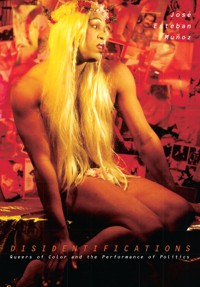
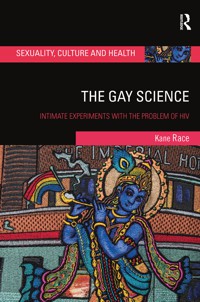
Disidentifications, by José Esteban Muñoz, and The Gay Science, by Kane Race
The HIV/AIDS crisis caused great trauma and also radical and revolutionary disruption in queer identity, possibility, and history. Two queer-theory books stand out as necessary for understanding this moment. In Muñoz’s first book, Disidentifications, he argues that living as a brown person or a queer person (or both) in the world can be exhausting because you either live with straight whiteness or live against it. He offers a third option: to disidentify, to invent new ways of being. His chapter on the HIV activist and reality-TV star Pedro Zamora (who died of AIDS) is perhaps his most applicable work about health, privacy, and disease. Zamora used fame to continue his activist work; he was an out HIV-positive Cuban American on national TV with a supportive family, running teach-ins for kids. In The Gay Science, Race invites readers to live in the world with HIV (and now, the coronavirus) differently, and to find maligned sites and practices—things like poppers, molly, and unprotected sex on the dance floor—as opportunities for pleasure and connection. Race also considers science an exuberant, constant state of questioning, much like Muñoz’s later definition of queerness as walking toward a horizon that will never arrive. Race and Muñoz both invite us to live “otherwise,” as the queer Black scholar Ashon Crawley says, to find self-indulgence in things that might be forbidden while still acting according to standards that support and protect one’s community. These books may both be scholarly queer theory, but they are both a disrupting joy to read.
[Read: The pandemic is following a very predictable and depressing pattern]
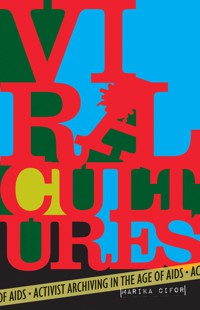
Viral Cultures, by Marika Cifor
Are plague stories lost along with their dead? In Viral Cultures, an archivist’s work of scholarship, Cifor demonstrates how essential archives were to recovering and telling stories about HIV/AIDS, even as so many of the activists and artists chronicling the virus’s effects were lost to it. She also implores readers to think critically about how they remember the work of organizations such as ACT UP. Some forms of nostalgia, she argues, can be flattening (or even harmful at a time of such mass death). “The acts of creating, collecting, and preserving records that affirm the existence of communities that have been historically oppressed is political, and community AIDS archives are a manifestation of archival activism,” she writes. It can be read as an entreaty to us today that we should similarly preserve our own pandemic memories. We all have the lethal constraints of a human body; Cifor offers us a pathway to ensure that our most important work, the messy work of living, cannot so easily be erased.
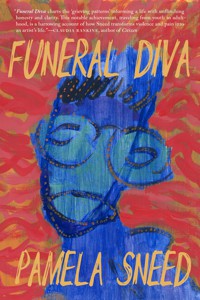
Funeral Diva, by Pamela Sneed
Like Viral Cultures, Sneed’s book reanimates forgotten stories. Part poem, part memoir, part history, Sneed writes about her life as a Black lesbian artist in the midst of the HIV pandemic. Her words are full of passion, memory, joy, and pain in equal measure. She importantly considers the losses of Black women (in many cases to cancer, including Audre Lorde) alongside the losses of so many Black gay men to HIV. These Black women are erased in the NYC narratives of HIV/AIDS; Sneed places them there, central to the story. “I moan complain,” she writes, “How the AIDS narrative only belongs to men / They never ask women / Black women / As if AIDS didn’t happen to us.” Sneed’s writing, like Cifor’s and Schulman’s, brings to mind the famous ACT UP slogan: “Women don’t get AIDS, they just die from it.” Because Sneed, as a Black lesbian woman who lived in this time in NYC, is filling in a gap in the literature of this history, this book was canon the second it was printed. I read and reread it often.
[Read: The LGBTQ health clinic that faced a dark truth about the AIDS crisis]
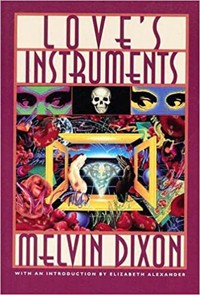
Love’s Instruments, by Melvin Dixon
As many of the books above show, we do have queer elders; not everyone in the generation above me was lost. But I want to end with some of the ones we did lose, and in particular examine the care and tenderness that queer people showed toward one another in that moment of mass viral death. So many poetry collections from the ’80s and ’90s capture loving in the face of an imminent end. A favorite of mine is Dixon’s posthumous 1995 collection, Love’s Instruments (he died in 1992), including the poem “Heartbeats.” Dixon ends this poem “Sweet heart. Don’t stop. / Breathe in. Breathe out.” In another poem in the collection, he writes of two lovers dying together, just as they always planned, but in their 40s, not their 80s: “We promised to grow old together, our dream / since years ago when we began / to celebrate our common tenderness / and touch … / You grip the walker and I hobble with a cane. / Two witnesses for our bent generation.” Do you see how beautiful these men were to each other? In this moment of loss, people could have run, or turned into the worst versions of themselves. But no: Their love and care is our way forward. Go on. Breathe in. Breathe out.
When you buy a book using a link on this page, we receive a commission. Thank you for supporting The Atlantic.


